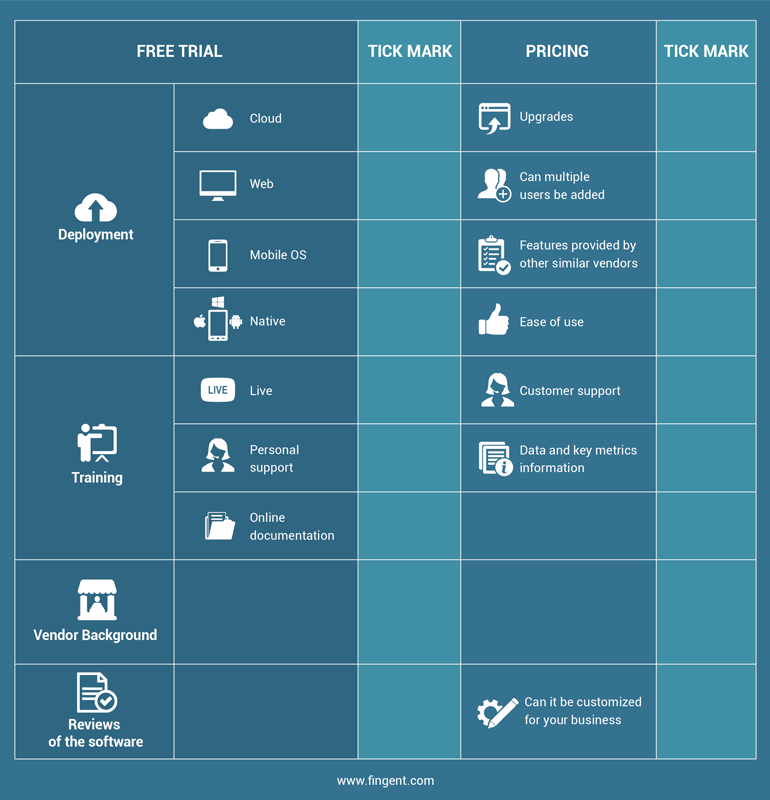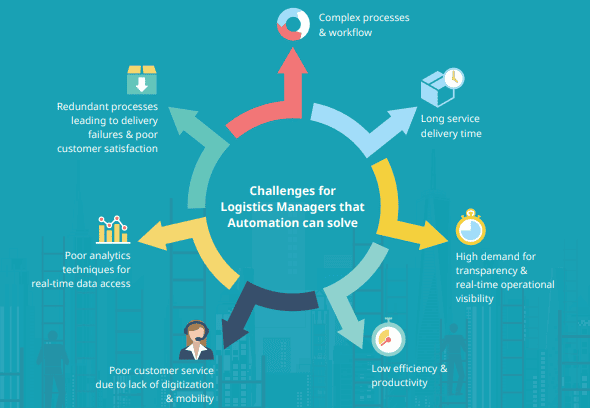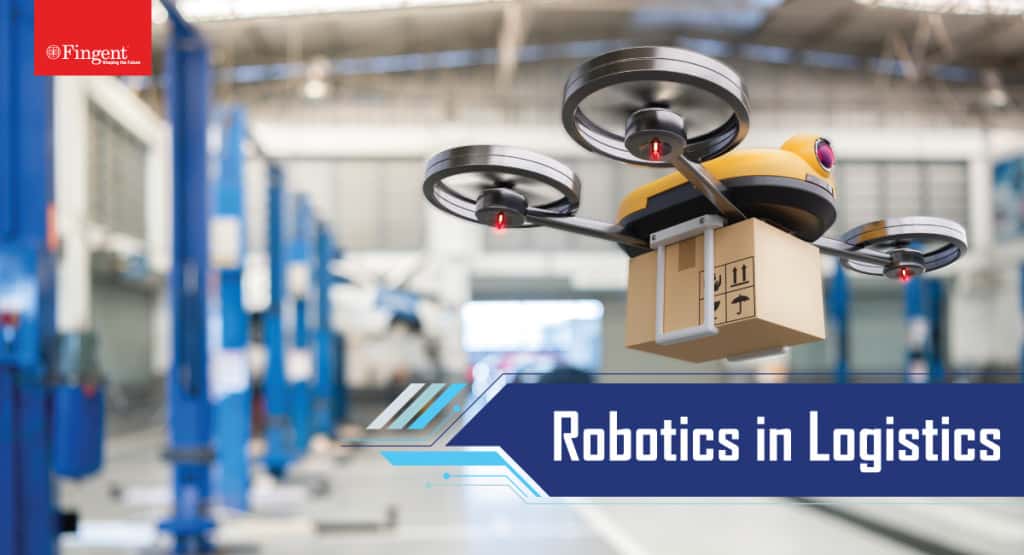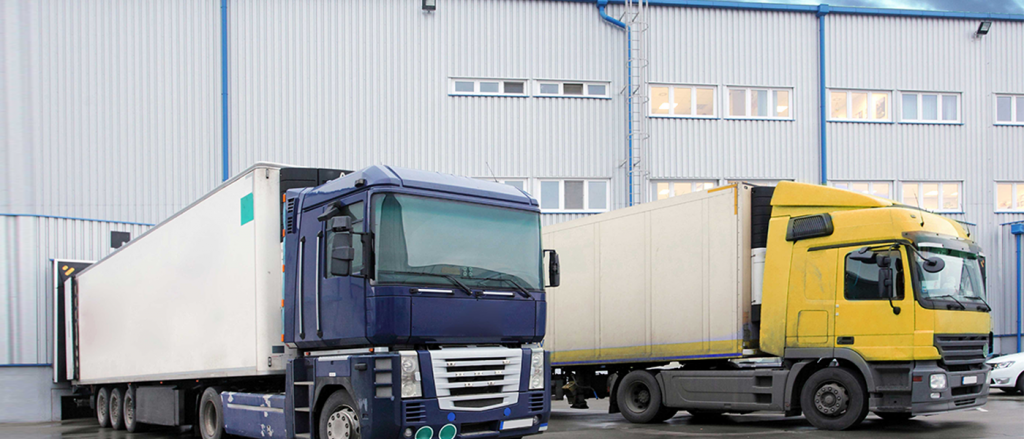Tag: Supply Chain Management
Supply chain management is a complex web of processes that involve the seamless coordination of procurement, production, distribution, and more. Among these, inventory management stands out as a pivotal aspect that can make or break the entire system.
Maintaining control over inventory is like keeping a careful eye on the pieces of a chessboard. Every move counts, and any miscalculation can have far-reaching consequences. Imagine trying to play chess without knowing the current position of your pieces or your opponent’s – chaos would ensue.
In this blog, we delve into the common challenges faced in supply chain management concerning inventory control and explore the merits of building a custom inventory tracking system to address these issues.
Diving into the Nuts and Bolts: Common Inventory Management Challenges
1. Running Out and Piling Up: The absence of real-time tracking often leads to discrepancies between recorded and actual stock levels. This discrepancy can result in stockouts or overstock situations. Have you ever reached for your favorite snack only to find an empty bag? That’s what a stockout feels like for businesses – missed sales and disappointed customers. On the flip side, having too much inventory is like buying more snacks than you can eat – it leads to unnecessary costs and storage challenges.
2. Data Silos: Traditional inventory systems are often isolated, creating data silos that hinder communication and collaboration across different departments. This lack of cohesion can lead to inefficiencies and errors.
3. Forecasting Difficulties: Accurate demand forecasting is challenging without real-time insights. Businesses often struggle to predict market trends and consumer demands, leading to suboptimal inventory levels and increased holding costs.
4. Manual Processes: Relying on manual processes for inventory management is not only time-consuming but also prone to errors. It is like trying to juggle a dozen eggs without a basket. This can result in discrepancies between recorded and actual inventory levels, leading to operational inefficiencies.
5. Lack of Scalability: Many off-the-shelf inventory management solutions may lack the flexibility needed to adapt to the unique demands of a growing business. This lack of scalability can hinder long-term success.
How Can an Inventory Tracking System Help?
A custom inventory tracking system serves as a key strategic tool, providing businesses with a competitive edge in managing inventory complexities. Let’s now explore the concrete benefits of implementing such a system and its targeted solutions to common supply chain challenges.
1. Real-time Visibility:
An effective inventory tracking system grants you real-time visibility into your stock levels. This transparency enables timely decision-making, reducing the risk of stockouts or overstock situations. By knowing exactly what is in your inventory at any given moment, you can optimize stocking levels and respond swiftly to changes in demand.
Read more: AI in Supply Chain and Logistics
2. Cost Savings:
A well-designed tracking system allows you to minimize carrying costs by preventing excess inventory buildup. By optimizing stock levels and improving order accuracy, you can reduce holding costs, warehouse space requirements, and the costs associated with expedited shipping due to stockouts.
3. Enhanced Accuracy:
Manual tracking methods are prone to errors, leading to discrepancies in stock levels and financial records. An automated inventory tracking system eliminates human errors, ensuring accuracy in your records. This not only improves financial reporting but also builds trust with your customers and stakeholders.
4. Efficient Order Fulfillment:
An inventory tracking system streamlines the order fulfillment process by providing insights into available stock, order status, and delivery timelines. This efficiency contributes to a positive customer experience and strengthens your business reputation.
Read more: Warehouse Management System: Business Applications and Case Studies.
Challenges Addressed by a Custom Inventory Tracking System
1. Stockouts and Overstock Situations
Challenge: Unplanned stockouts or excessive inventory can cripple operations and strain relationships with clients.
Solution: Real-time visibility allows for proactive inventory management, preventing stockouts and overstock situations. The system sends alerts when stock levels approach predefined thresholds, empowering you to take preventive action.
2. Manual Errors in Tracking:
Challenge: Manual tracking methods are prone to human errors, leading to discrepancies in records and financial reporting.
Solution: Automation eradicates the potential for errors, ensuring accuracy in tracking and reporting. This not only saves time spent on rectifying mistakes but also builds trust with stakeholders.
3. Inefficient Order Fulfillment:
Challenge: Slow and inaccurate order fulfillment can result in dissatisfied customers and harm your brand reputation.
Solution: An inventory tracking system provides real-time insights into stock levels, enabling efficient order processing. This leads to faster order fulfillment, improved customer satisfaction, and a competitive edge.
4. Lack of Data-Driven Decision Making:
Challenge: Without real-time data, decision-makers are forced to rely on intuition rather than insights.
Solution: The system’s data analytics capabilities empower decision-makers with actionable insights. This data-driven approach facilitates strategic decision-making and allows for quicker adaptations to market changes.
The Case for Custom Inventory Tracking
In supply chain management, precision and efficiency are vital for success. Off-the-shelf solutions may appear attractive, but investing in a custom inventory tracking system is a strategic imperative. Here’s why:
1. Precision Aligned with Your Unique Needs: Off-the-shelf solutions lack specificity, designed for a broad audience. A custom system is tailored to your unique operations, ensuring seamless alignment with your processes, from order fulfillment to warehouse management.
2. Real-Time Adaptability: Custom solutions offer real-time adaptability to changing market conditions, technological advancements, and industry standards. This agility ensures you stay ahead without being confined by pre-set functionalities.
3. Cost-Effective Scalability: Off-the-shelf solutions often come with unnecessary features or limitations, hindering growth. Custom inventory tracking systems offer scalable, cost-effective solutions, allowing you to expand or modify functionalities without unnecessary overheads as your business evolves.
4. Seamless Integration: A custom solution ensures seamless integration with your existing suite of tools, from ERP to CRM systems. This creates a unified ecosystem, optimizing workflow, enhancing data accuracy, and improving overall operational efficiency.
Read more: Understanding The Types Of Warehouse Management Systems
5. Enhanced Security: Generic systems employ a one-size-fits-all security approach, leaving businesses vulnerable. A custom inventory tracking system enables personalized security measures, safeguarding sensitive data and mitigating risks specific to your industry and operations.
6. Maximized User Adoption: The effectiveness of a system hinges on its user adoption rate. Custom solutions prioritize user experience, aligning interfaces with your team’s familiarity. This minimizes training requirements, facilitating a smooth transition and maximizing the efficiency of your inventory management system.
7. Tailored Reporting for Decision-Making: Unlike pre-packaged systems, a custom inventory tracking system allows you to tailor reporting functionalities. It ensures the data you receive is not just comprehensive but directly aligns with your business goals, providing precise insights for strategic decision-making.
Elevate Your Supply Chain with Fingent’s Custom Inventory Tracking Solutions
At Fingent, we’re your dedicated partner for supply chain excellence, specializing in crafting tailored inventory tracking systems. Our solutions seamlessly adapt in real-time, ensuring agility in dynamic market landscapes. With a focus on scalability without unnecessary costs, we seamlessly integrate with your systems for enhanced efficiency. Leverage our expertise in custom reporting for actionable insights, backed by a proven track record in diverse industries. Partner with Fingent for precise, adaptable, and scalable supply chain solutions.
Get in touch with us, and let’s talk.
Stay up to date on what's new

Featured Blogs
Stay up to date on
what's new



Talk To Our Experts
Artificial Intelligence (AI) evolved from a concept of science fiction to a transformative force that permeates our daily lives. From autonomous vehicles to voice assistants, AI has already made significant inroads in various sectors.
However, one area that stands to gain immensely from AI’s potential is the supply chain. As the backbone of global trade, the supply chain encompasses complex networks and intricate logistics. It is an ecosystem where efficiency, accuracy, and agility can make or break success.
With its vast array of applications, AI has the potential to streamline operations, enhance decision-making, and unlock untapped opportunities. In this journey through AI’s rising capabilities, we will delve into real-world use cases that demonstrate how AI is revolutionizing the supply chain. Furthermore, we will also explore the specific benefits that AI brings to the supply chain domain.
Role Of AI Optimizing the Supply Chain
Every business owner dreams of a supply chain that is finely tuned, seamlessly efficient, and adaptive to every twist and turn of the market. A business where warehouses run like clockwork, shipments arrive precisely on time, and customer demands are anticipated with uncanny accuracy is not a far-fetched dream; it’s a reality being shaped by the game-changing role of Artificial Intelligence (AI) in optimizing supply chain operations.
At the heart of AI’s transformative influence are three key components that work in harmony to revolutionize the supply chain landscape. Let’s uncover their captivating role in reshaping the future of supply chains.
- Machine Learning and Predictive Analytics: Machine learning and predictive analytics in the supply chain are like having a trusted, experienced mentor by your side, whispering valuable insights and guidance into your ear. Machine learning algorithms analyze vast amounts of historical data to uncover patterns, trends, and potential pitfalls.
- Natural Language Processing and Chatbots: Natural Language Processing (NLP) allows you to simply ask a question about your supply chain and receive instant, accurate answers. With a chatbot available 24/7, customers can get instant responses, while supply chain teams can focus on strategic decision-making.
- Robotics and Automation: Robots, equipped with advanced sensors and AI algorithms, can perform repetitive tasks with unmatched precision and speed. From inventory management to order fulfillment, these tireless machines streamline operations, reduce errors, and enhance efficiency.
How AI Solves Supply Chain Challenges
The world of supply chain management is like a complex maze with numerous challenges at every turn. Thankfully, AI emerges as the trusty guide, equipped with the tools to solve some of the most daunting hurdles. Here are some for your reference:
1. Demand Forecasting and Inventory Optimization: This AI-powered assistant acts as your supply chain ‘savant,’ it understands your historical consumption patterns, market trends, and even factors like seasonality or promotional events.
2. Supplier Selection and Relationship Management: Choosing the right suppliers and maintaining strong relationships is like finding the perfect dance partner. AI steps in as a knowledgeable matchmaker. By analyzing vast amounts of supplier data, performance metrics, AI algorithms can assess and rank potential suppliers based on criteria such as reliability, quality, and cost.
3. Warehouse and Inventory Management: AI acts as a vigilant warehouse manager, optimizing layout, guiding picking and packing processes, and even predicting optimal storage locations. With AI-powered systems, warehouses can maximize space utilization, minimize errors, and accelerate order fulfillment, resulting in streamlined operations and satisfied customers.
4. Transportation and Logistics Optimization: AI takes on the role of coordinator who has a bird’s-eye view of the entire transportation network, utilizing algorithms to analyze real-time data on factors like traffic, weather conditions, and delivery constraints. By optimizing routes, load planning, and vehicle assignments, AI enables efficient transportation management.
5. Quality Control and Defect Detection: Think of a diligent quality inspector who never misses a flaw in a product. AI becomes this meticulous inspector, utilizing computer vision and machine learning algorithms to analyze visual data and detect defects with remarkable accuracy.
6. Risk Management and Supply Chain Resilience: AI plays this vital role just like a risk management expert. It analyzes a wide range of data sources to identify potential risks and vulnerabilities, ensuring supply chain resilience in the face of uncertainties.
7. Customer Service and Satisfaction Enhancement: AI takes on the role of a customer service representative who can swiftly address customer inquiries, provide accurate information, and resolve issues with ease. AI-powered customer service tools offer instant responses, personalized recommendations, and seamless assistance, enhancing customer satisfaction and loyalty.
Watch: Artificial Intelligence – how to navigate AI if you are not a tech company.
Remarkable Real-world examples of AI in the Supply Chain
AI transforms supply chain management like never before. Don’t take our word for it. See it in action as implemented by big players in the industry:
Use Case 1: Precision Prediction by Amazon
Problem: Traditional demand forecasting and inventory management methods often struggle to predict customer demands and optimize inventory levels in real-time accurately.
Solution: To address this challenge, Amazon has harnessed the power of AI algorithms to revolutionize demand forecasting and inventory management. By analyzing vast amounts of customer data, historical sales patterns, and even external factors like weather forecasts, AI algorithms can accurately predict demand with remarkable precision.
This AI-driven approach allows Amazon to optimize inventory levels, ensuring that popular products are readily available while minimizing excess inventory and reducing the risk of stockouts. By aligning supply with demand, Amazon is able to enhance customer satisfaction and maintain a competitive edge in the dynamic e-commerce landscape.
Use Case 2: Substitution Solution by Walmart
Problem: In online grocery shopping, customers often encounter situations where certain items they ordered are out of stock. This can lead to dissatisfaction and inconvenience, as customers may have to manually search for suitable substitutes or go without the desired product.
Solution: To address this issue, Walmart has implemented an AI-driven product substitution system. Using advanced algorithms, the system analyzes product attributes, customer preferences, and available inventory data to suggest suitable substitutions for out-of-stock items.
When an ordered item is unavailable, the AI system automatically identifies the best possible substitute based on factors such as brand, size, price, and customer feedback. It takes into account the customer’s past purchase history and preferences to make personalized recommendations. The system provides clear and transparent information to customers, ensuring they are aware of the substitution and have the option to accept or reject it.
Use Case 3: Real-Time Routing by UPS
Problem: Traditional route planning methods often struggle to optimize delivery routes efficiently, resulting in inefficient use of time, resources, and fuel.
Solution: UPS leverages AI algorithms for route optimization, enabling them to analyze real-time data on factors such as traffic patterns, delivery constraints, and even weather conditions. By considering these variables, UPS can generate optimal delivery routes that minimize distances, reduce fuel consumption, and optimize delivery time.
Through the implementation of AI in its logistics operations, UPS achieves significant cost savings, improves delivery efficiency, and reduces its carbon footprint. This AI-driven approach allows UPS to stay ahead of the competition and provide exceptional service to its customers.
Use Case 4: Valuable Vending by Coco-Cola
Problem: Traditional vending machines often lack the ability to gather real-time data on customer behavior and gauge the effectiveness of different brands and product offerings.
Solution: To overcome these limitations, Coca-Cola has implemented AI-enabled next-gen vending machines. These machines are equipped with advanced sensors, cameras, and AI algorithms that gather real-time data on customer behavior, purchasing patterns, and brand preferences.
With this newfound understanding, Coca-Cola can optimize product placements, tailor offerings to specific locations, and develop targeted marketing campaigns. Furthermore, the AI-enabled vending machines also allow Coca-Cola to remotely monitor inventory levels, predict demand patterns, and optimize restocking schedules. This ensures that the vending machines are always well-stocked with popular products, reducing the likelihood of stockouts and maximizing sales opportunities.
Use Case 5: Wonder Warehouses by Alibaba
Problem: Traditional warehouse management practices often face challenges related to inefficient storage utilization, suboptimal picking processes, and delays in order fulfillment.
Solution: Alibaba has embraced AI technology to develop smart warehouses that leverage automation, robotics, and AI algorithms. These AI-enabled warehouses optimize storage utilization, streamline picking and packing processes, and enable efficient order fulfillment.
Through the integration of AI, Alibaba achieves faster and more accurate inventory management, enhances warehouse operations, and improves overall efficiency in its supply chain. This innovative use of AI allows Alibaba to meet the demands of the e-commerce market and deliver exceptional service to its customers.
Checkout out our Infographic: Successful Logistics and Warehouse Management Practices.
Solid Supply Chain Solution with AI by Fingent
Advancements in AI technologies continue to shape the supply chain landscape, with machine learning algorithms becoming more sophisticated, natural language processing capabilities evolving, and robotics and automation becoming increasingly intelligent and adaptable. These advancements enable businesses to make data-driven decisions, automate repetitive tasks, and optimize operations like never before.
At Fingent, we understand the immense potential of AI in supply chain management and are committed to helping businesses harness its power. Our expertise lies in developing innovative AI solutions tailored to specific industry needs, integrating AI with emerging technologies, and driving digital transformation in the supply chain.
Whether it’s building intelligent forecasting models, implementing AI-powered automation, or leveraging AI-driven analytics, Fingent is dedicated to empowering organizations to thrive in the AI-driven supply chain landscape.
Businesses that embrace its potential will gain a significant competitive advantage. By leveraging AI technologies, integrating with emerging technologies, and partnering with experienced custom software solution providers like Fingent, organizations can unlock new frontiers of efficiency, innovation, and success in the dynamic world of supply chain management.
Reach out to us to get the best supply solution for your business.
Stay up to date on what's new

Featured Blogs
Stay up to date on
what's new



Talk To Our Experts
The onset of globalization has encouraged business operations on an international scale. It offers companies the opportunity to reach new customers in new markets. Exposure to unknown markets and sometimes even known markets can expose businesses to greater competition and greater risk. However, efficient management of the supply chain can do away with many of these risks and put you on the path to success.
The challenges in the supply chain can include being unsure of the reliability of your suppliers, and their quality, cost, lead time, lot size, and more. Your business will surely profit if you had a way to monitor your supplies and the risks to your business.
Yes, clear visibility is crucial.
This is where custom software can benefit your business!
Custom software equips you with a way to collect, organize, and monitor the supplier-related information that is most meaningful to your business. This blog discusses which functions of the supply chain can be better managed with custom software and also talks about the benefits this can bring to your business.
Why Is Customized Supply Chain Management Software Important?
Efficient management of the supply chain depends primarily on data gathered at each stage of the supply chain process. The success of the business hinges on the way companies use those insights to make decisions that optimize demand, supply, inventory, and deliveries.
That is why custom software is essential to managing the supply chain. Custom software can enable organizations to make better use of their data as it gives structure to the information already in their possession.
Through the use of custom software solutions, companies can identify faults in their supply chain process. Such visibility can help them make better inventory decisions or inform their customers of the shipping status for their confirmed orders.
Essentially, custom software is instrumental in improving business operations and relationships with both customers and suppliers.
Read more: Build or Buy Logistic Software: An End To The Prolonged Discussion
Manage Key Supply Chain Functions with Custom Software
Every business is unique in its functions. A software can address the specific company challenges only when customized and tailor-built after crucially analyzing the workflows and industry pain points. Here are a few to look into.
- Raw material acquisition: Supply chain management is a journey, and purchasing is at the beginning of that journey. Purchasing includes sourcing raw materials and other resources. Custom software enables smooth coordination with suppliers to deliver the material without any delays requires.
- Planning and forecasting: The operations team must anticipate the possible market demand and the number of units for production. Over-anticipated demand can result in excess inventory costs. If it is underestimated, then the company will not be able to meet its customer demand and thus lose revenue. Custom solutions for planning and forecasting can help the operations team to anticipate demands more accurately.
- Warehouse arrangement: Supply chain management requires warehouse arrangements till it is shipped for delivery. If the products are delivered outside the country or state limits, there will also be a need for outstation warehouses. Custom software can optimize logistics to reach end-point delivery without any glitches.
Advantages Of Custom Software in Supply Chain Management
1. Increased transparency throughout the supply chain
Knowing exactly where your item is at any given time is important for all businesses as it allows you to sell the item before it even reaches your warehouse. Custom software can help you sell this way because it can pinpoint the exact location of your item and the time that it will reach your warehouse.
This will allow you to provide a guarantee to your customer that he will receive the product he purchased. Streamlining the supply chain will help achieve faster response times and increase customer loyalty.
2. Efficient inventory management
With the help of custom software, you can sell your item while it is on the move or as it is in the making. It can help you estimate how many items you must produce, eliminating excessive production.
3. Supplier management
You can keep a good relationship with your suppliers with custom software. Real-time data will allow you to know if you are running out of stock or if your tools and equipment need repair or replacement. This data will help you contact your suppliers immediately and thus minimize any potential delays.
You will also have details such as account receivables and other information at your fingertips when dealing with your suppliers. This will ensure that you are up to date with payments and discounts. As a result, you notice that your communication and cooperation with dealers and vendors improve considerably.
4. Streamline Processes
Custom software will create highly streamlined processes for supply chain management, especially for businesses that operate from different locations across the globe.
Fully customized software enables companies to accumulate all business data in one centralized location. Employees greatly benefit from this as they can now gain access to the latest versions of data, even if they are accessing it from multiple locations or branches.
5. Un-bottleneck your supply chain
Bottlenecks in the supply chain are a direct result of the ineffective system in place that does not allow teams in different locations to communicate and align statuses to fulfill overall objectives. Companies that experience such bottlenecks miss opportunities and lose customers because they are unable to provide what their customers want.
An unsatisfied customer walks out on you and straight into the open arms of your competition. If you are beginning to notice lower satisfaction rates, numerous complaints, or bad reviews from the customers, it is time to explore custom software that can give you a business-targeted approach to customer experience.
When a business looks to meet or exceed customer demands, they have to rely heavily on its supply chain. Internal bottlenecks can slow down the entire process and risk order fulfillment. To prevent such bottlenecks, a business must understand what causes them and how to prevent them.
Custom software can help a business identify such bottlenecks and thus help efficiently manage the supply chain.
Save Money, Time, and Your Business!
It is clear that custom software comes with many benefits. It is also obvious that it saves money with time. While off-the-shelf software may come with a lower initial cost, investing in custom software will give more benefits to the supply chain management cycle. It improves sales functions and boosts productivity.
Custom software that is fully optimized to the supply chain will improve business function in a way no off-the-shelf software can. Fully optimizing the supply chain process can be lean and seamless through the use of custom software. If the business growth process is left unchecked by the off-the-shelf software solutions it can become highly chaotic. Custom software gives companies a higher level of control over all supply chain operations while taking control over the growth process.
A company that is digitally driven by custom software automatically enables a more proactive and open business. If this is what you want for your business, give us a call.
Our experts at Fingent thrive on creating custom solutions for our clients. They will be happy to talk through the game plan with you and show you how your business can excel with custom software for your supply chain.
Stay up to date on what's new

Featured Blogs
Stay up to date on
what's new



Talk To Our Experts
How Logistics Management Software and Technology Will Transform Businesses in 2021
Without logistics software management, Pfizer cannot become one of the world’s largest sterile injectables suppliers in 2021. Neither can they store, transport, and distribute the COVID-19 vaccine to multiple countries, maintaining ultra-low temperatures. Monitoring temperatures, optimizing delivery routes, managing cold storage, tracking vaccines in transit, overseeing distribution – all these prove that the logistics and supply chain sector has been at the forefront of tech disruption in 2021. Various governments are taking measures to expedite vaccine distribution to the masses; shoppers have increasingly moved to online shopping – 2021 is set to witness the increasing adoption of logistics management software.
Read more: 6 Tips for Logistics and Supply Chain Leaders to Plan COVID-19 Vaccine Distribution Strategies
The Impact of Technology in Logistics
Technology continues to disrupt logistics and supply chain processes by changing it altogether from its core. Research and Markets reports that the increasing use of IoT and emerging technologies across industries will accelerate Connected Logistics’s adoption. The Global Connected Logistics market is projected to grow at a CAGR of 17.5% during 2021 – 2026.
Consequently, logistics will become more refined and fast, changing the way materials, goods, freight, sales orders, inventory, and production are managed.
As efficiency and speed become the determining factors, logistics need to adopt a new approach to deal with the rising demand and complexity of processes. The industry needs a viable solution that manages the flow of things so that the right product reaches the customer within the specified time.
Logistics software adoption streamlines operations and removes process hassles. Organizations that invested in logistics management software have produced good outcomes with noticeable improvements in process, operations, and delivery.
This article attempts to explain all that you need to know about logistics management software, including:
- What is Logistics Management Software?
- Challenges in logistics management
- Pros of a having a logistics software
- 2021 trends that reshape logistics management
- Choosing the right Logistics Management Software
- Checklist of essentials in a Logistics Management Software
- How logistics software improves efficiency
- The future of supply chain
What is Logistics Management?
Logistics involves the flow of things from their point of origin to the point of consumption, usually general customers or businesses. The selection of vendors, transportation means, routes, and delivery methods constitute an essential part of logistical operations.
Logistics management is a part of the supply chain that uses planning and implementation to store and deliver goods and services to the customer. It coordinates several critical activities of the supply chain that range from product development to commercialization.
Typically a logistics management system includes the following:
- Inbound and outbound transportation management
- Warehouse management
- Fleet management
- Processing orders
- Inventory control
- Managing third-party logistics service providers
- Planning supply and demand
Watch Video: Top Challenges Faced by Logistic Management
Logistics management constitutes several functions such as production planning, sourcing, procurement, packaging, and dispatching. It also involves finding the suitable means to deliver goods and services to the end-user. Inbound and outbound traffic is vital in logistics management.
- Inbound logistics is a linear flow of raw materials from suppliers into a warehouse and then a production unit.
- Shifting the products from the warehouse inventory into the hands of the customers falls under outbound logistics.
An example of inbound and outbound logistics at play is that of a manufacturer of electronic goods, which requires several raw materials in the form of components, nuts, bolts, cables, casting, packaging cartons, etc., to build products.
Challenges in Logistics Management
Logistics is prone to several issues that occur primarily due to simple human errors or other factors. Weak decisions usually result in delays in the transport or delivery of goods, leading to customer dissatisfaction. Besides, another challenge that logistics face generally is in the safe transportation of goods. The goods can become damaged or faulty if not handled accordingly while in transit.
Customer demand has also become higher as they want more transparency in the delivery process. Moreover, logistics and supply chains are facing the still unsolved issue of cost control. The rise of fuel charges combined with a steep increase in energy, freight, and labor rates put further pressure on logistics providers.
Effective risk management and managing the relationship between the suppliers and partners are also vital. A reliable solution that covers all these individual challenges in logistics is thus becoming a necessity. The use of logistics management software (LMS) can streamline logistical operations and guide a logistics provider or business to deal with them appropriately.
What is Logistics Management Software?
Logistics Management Software (LMS) simplifies logistics operations by refining the production cycle and making it easier to access important information quickly. A logistics management software helps businesses manage the various processes that go into the production cycle from the delivery of raw materials to shipping the finished products to the consumers.
Logistics software has become broader in its scope and functionality to deal with a vast array of operations and processes. It shares similarities with supply chain management software (SCMS), which contains tools that help deal with transactions, processes, and suppliers. The functionality of a logistics management software extends to areas such as:
- Processing customer requests
- Processing purchase orders
- Inventory Management
- Suppliers Management
- Sales and Distribution
A logistics management software gets rid of all the conventional approaches like paperwork and spreadsheets to simplify management. It comes in three variations: warehouse management systems, enterprise resource planning systems, and integrated supply chain management suites.
Companies with an in-house logistics or supply chain division and third-party logistics providers utilize any of these different versions according to their requirements to efficiently manage their logistical and supply chain operations.
The Pros of having a Logistics Software
In logistics, handing over the process to a logistics management software has several advantages. With logistics management software, a company or 3PL (third-party logistics) provider could avail of the following benefits.
- Refine Transportation: Transportation is a crucial area of logistics. It incurs the most charges in the form of fuel, energy, labor, motorway tolls, and shipping fees. Relying on logistics software can help manage the various transportation means and leverage the operational data for process automation. Logistics management software makes it easy to analyze data and make relevant decisions for reducing costs maximizing efficiency.
- Faster Delivery: The logistics and supply chain industry faces several issues that affect delivery and lead to delays. By incorporating logistics software, businesses can rapidly deliver their products to customers. A logistics management software can improve delivery speed by making meaningful interventions in the production cycle and choosing the suitable carrier. It ultimately reduces shipping delays to a great extent.
- Minimize Human Errors: Another notable advantage of having logistics management software is in reducing human error. Manual analysis of vast quantities of transportation data is difficult, time-consuming, and prone to errors. A logistics software can process these data without any mistakes in less time, seamlessly pushing forward the operations with minimal/nil delays.
- Automates Functions: Process Automation is a tremendous boon of logistics software integration. Certain functions like creating shipment routes, load planning, and tendering of load to carriers are easily automated and managed by using logistics software. Moreover, it eliminates paperwork, which helps deal with the processes efficiently and timely.
- Reduce Costs: Logistics software can automatically compare different shipping services, delivery agents, and transportation methods to find the least pricing ones. The other way logistics software reduces costs is by lowering the expedited shipments through improved shipment planning.
Read more: How Transportation Management Systems Benefit Third Party Logistics (3PL) Service Providers
2021 Trends that Reshape Logistics Management
The demand for logistics software management has peaked with the widespread popularity of e-commerce in 2021. The onset of COVID-19 is also a reason behind the peak in demand for logistics technology. As a result, logistics is constantly evolving to accommodate each industry’s rising requests that depend on it. One area where logistics has transformed is the digitization of its processes and resources. In 2021, the industry is expected to embrace the cloud, mobile, and emerging tech to transform logistics operations. Here are some of the top tech trends that will influence logistics and supply chain in 2021.
1. Artificial Intelligence
Logistics companies will use AI to identify patterns in data and churn insights. It will help advance operations such as intelligent transportation, route optimization, demand forecasting, budget planning, etc. McKinsey reports that AI-driven logistics optimization can reduce costs through real-time forecasts and behavioral coaching. The potential incremental value of AI in the logistics and transportation industry (89%) will be more than other analytics techniques.
Read more: How AI is Reshaping the Supply-Chain and Logistics Industry
2. Warehouse Robotics
Over the last few decades, innovative logistic robotic companies have worked hard to mesh AI and machine learning, better sensors and response capabilities, warehouse management software, or logistics management software. Recently, warehouse robotics in the supply chain has picked up pace exponentially. There has been colossal funding and investment in the industry. For example, Alibaba invested $15 billion into robotic logistics infrastructure, and Google invested $500 million into automated logistics for JD. It is also estimated that the global market for warehouse robotics in the supply chain will reach a market value of $22.4 billion by the end of 2021.
Read more: How Robotics in Logistics Helps Improve Supply Chain Efficiency
3. Cloud Computing
Cloud integrated logistics management software allows having real-time price updates, inventory, and tracking. Cloud-based logistics software enables real-time accuracy and 360-degree management of processes and systems. You can track a product through its lifecycle, right from ordering to distribution. It allows to significantly cut down the costs of lost products, missing deliveries, locate a shipment at any stage of transport, and reroute a misdirected shipment. Cloud-based logistics software allows everyone in a trade network to communicate and share data in real-time, make decisions quickly, and scale on-demand.
4. Contactless last-mile delivery
In a pandemic-troubled world, contactless delivery is more critical than ever. eCommerce companies and carriers face increasing pressure due to the surge in online shopping. It’s crucial to stay agile by ensuring business continuity. At the same time, it is also vital to remain safe and meet delivery needs. Electronic parcel lockers, contactless parcel delivery and collection, and self-service pick-up automate delivery processes to reduce physical interactions between customers and delivery agents.
Watch video: Custom Web Application Developed to Enable Smarter Locker Management
Custom logistics software applications can help fulfill the increasing demand for last-mile delivery. Fingent helps build healthy tech partnership ecosystems to ensure uninterrupted supply and distribution of your products and services.
5. Blockchain
Blockchain, also known as the distributed ledger technology, offers the ability to record transactions between parties securely and permanently. The shared and secured databases enabled by blockchain helps in avoiding intermediaries and third parties that verify, record, and coordinate transactions in a supply chain. Blockchain helps increase the traceability of the material supply chain, improve the credibility and trust of shared data, digitize physical assets like contracts and critical documents, streamline administrative processes, reduce costs, and enable effective auditing of supply chain data.
Example of blockchain application in logistics: The international logistics giant DHL uses blockchain-based serialization of pharmaceutical drugs and products to ensure that:
- the products come only from legitimate manufacturers,
- are not counterfeit, and
- are adequately tracked and traced through their journey from origin to consumption.
6. Predictive Analytics
The emergence of sensor technologies and AI has contributed heavily to the rapid growth of predictive maintenance in the logistics industry. Supply chain leaders want to utilize data effectively to optimize predictive maintenance, forecast demands, adjust inventory levels, improve cold chain transportation, and protect the integrity of the supply chain. Smart and optimized data management through predictive analytics and AI allow logistics providers to refine and transform the supply chain in 2021.
Opting for the right Logistics Management Software
With the trends shifting logistics management in a progressive direction, the need for software solutions in the field has become indispensable. Businesses, whether focussing on e-commerce or delivering services, can benefit from having logistics management software. However, the real question is finding the right kind of logistics software since the requirements vary for each business.
Read more: How to Pick the Right Logistics Management Software
A checklist of essentials in a Logistics Management Software
Before settling on software for logistics management, it is vital to understand the requirements and challenges a business faces daily. Carrying out a detailed analysis can help identify deficiencies in the existing logistical operations of a business. Besides that, it can suggest measures to redeem any discovered shortcomings in the cycle.
When deciding on logistics management software, there are several essential factors to consider. Firstly, it should contain a basic set of functions that can aid in simple logistical management operations.
Besides that, numerous other things should also be present in the software to tackle the wide base of a business’s logistical operations and processes.
Some of the key features to look for in a potential LMS are:
- Compatible Multi-Client Architecture: A logistics software that comes with multi-client architecture support is necessary if a business handles multiple customers. Software with inventory and purchase orders has more emphasis since it deals with several customers simultaneously or in different phases.
- Forecasting: The ability to forecast is a needed trait in logistics and supply chain management software since it can bridge gaps in supply and demand by enhancing the business processes. Demand, supply, and price forecasting can help supply chain management with proper production scheduling, better customer satisfaction, and minimized out-of-stock scenarios.
- Finance Integration: Having tools that integrate the supply chain’s financial side is another critical software requirement. Vital financial aspects like general ledger, account payables, and receivables can help manage the bookkeeping and records of transactions conveniently when included in logistics software.
- Inventory Tracking: Having an inbuilt inventory tracking feature can make logistics management software more dependable. Logistics involves transactions of various kinds. An inventory control feature enables easier processing while ensuring that the customer gets the invoice on time.
- Customizable and Streamlined Interface: A good logistics management software should contain a streamlined interface that allows for effortless navigation across its chief functions. A customizable logistics software can easily accommodate the unique infrastructure and methods implemented by a business.
- CRM: Logistics software should also cover the customer side. A CRM embedded logistics software allows the customers to know the status of their deliveries. For both inbound and outbound logistics, CRM can answer the customers’ queries and supply them with relevant information and adjustments to the delivery.
- Bill of Lading Creation: As a critical document in the shipping and freight chain, looking for a logistics system that can generate the bill of lading is recommended. This can make it easier to create the bill of lading receipts. It facilitates the seamless exchange of goods under the consignee of the shipper and the logistics company.
Refer the chart below to get a grip on the overall profile of any software logistics management:

With logistics pushed to the forefront of business operations, leveraging the right technology can make your business compatible with the changing environment.
Outsourcing to a software development vendor will help deploy scalable software for logistics management into your entire supply chain operations. A global software solutions provider like Fingent can give you the advantage of custom logistics solutions built solely based on your requirements.
How logistics software improves efficiency
Logistics management software guarantees more efficiency and control over the logistical and supply chain operations of a business. It means simply substituting the existing manual methods with a software-centric solution. The array of features in a logistics system can refine the entire logistics cycle right from its center. For owners, vendors, and the end customers, using an LSM (Logistics Software management) model opens up improved collaboration, which is the essence of effective logistics management.
Opt for logistics software requires considering all the criteria mentioned above. For a business, it involves addressing their needs and then choosing one that wraps around their existing processes. By integrating an LMS into their operations, companies could reduce their turnaround times and streamline the overall cycle of planning and delivery while keeping up with the customers’ requirements.
Read more: Build or Buy Logistics Software – An End To The Prolonged Discussion
Transitioning into Cloud-Based SaaS: The Future of Supply Chain
With cloud computing gaining momentum in 2021, a whole new way of processing data is unveiled. The tech innovations in 2021 have influenced the supply chain and logistics operations. Increased adoption of supply chain and logistics solutions in 2021 will lead to a shift from the on-premise model to the SaaS model.
Predictions estimate that a subscription-based SaaS model will dominate supply chain management in 2021 and beyond. Adopting a cloud-based supply chain solution offers benefits in the form of flexibility, robustness, and affordability. Free and open-source software adoption has made the Cloud the primary choice for logistics providers and organizations worldwide.
Cloud-based SaaS supply chain solutions offer numerous benefits. It gives a comprehensive outlook on the overall operations in logistics by making processes more transparent and collaborative. Implementing a cloud system reduces the upfront and operating costs. It also offers the ability to scale up with the business needs and enhances supply chain efficiency.
To sum up,
Opting for a logistics solution is one step to simplifying the entire cycle of logistical and supply chain operations. Effective management of each process from procurement to delivery requires a custom logistics management solution that can accommodate each provider’s demands. For instance, an organization lacking an in-house logistics department needs a software management tool that can wrap around their existing methodology and improve it.
By partnering with a vendor specializing in software development, businesses can deploy logistics management software tailored to their requirements. Pioneers in custom software development like Fingent can assist companies from wholesalers to distributors to e-commerce with the advantage of custom logistic solutions. Get in touch with us to spearhead your operations swiftly and efficiently.
Stay up to date on what's new

Featured Blogs
Stay up to date on
what's new





















